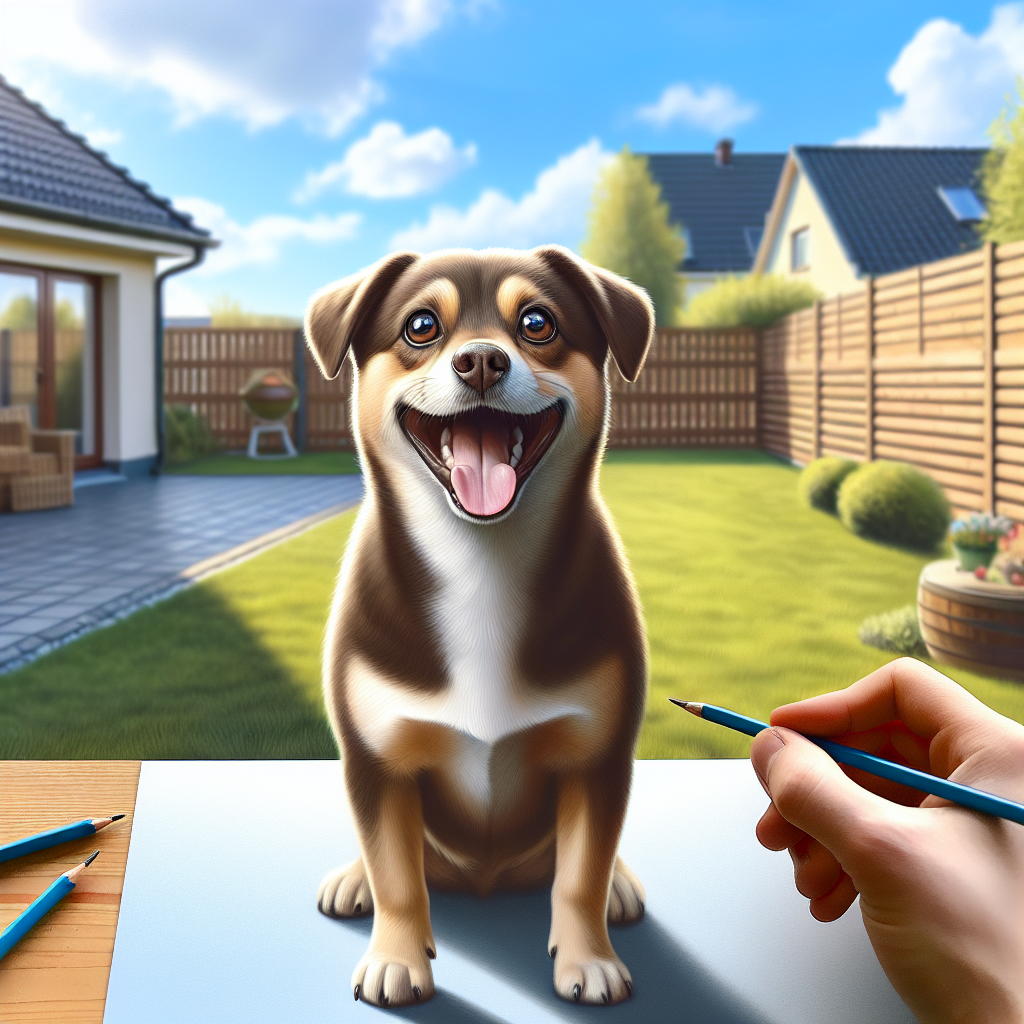Introduction: The Flea Dilemma

Ah, fleas. Those pesky little jumpers that seem to vanish into thin air the moment you think you’ve got ’em. They’re like that one guest at a party who overstays their welcome and tries to crash on your couch indefinitely. Getting rid of fleas in the house forever? It’s the ultimate goal. But let’s be honest, it’s not as simple as waving a magic wand.
Flea infestation home remedies have been passed down like grandma’s secret pie recipe, but tackling fleas requires more than sprinkling baking soda on the carpet. You see, these tiny critters are masters of survival. They’re not just hitching a ride on your furry friends—they’re setting up camp in your home.
The first step is understanding the problem, diving headfirst into the world of fleas. Buckle up, folks. This ain’t your regular house cleaning chore. It’s a war. And like any good battle plan, it starts with knowing your enemy.
Understanding Flea Behavior
Let’s get into the flea brain, shall we? Flea behavior patterns are more predictable than you’d think. These buggers have been around for millions of years, perfecting their act. Think of them as tiny vampires—only, they don’t turn into bats, they just jump around like hyperactive gymnasts.
Fleas are driven by one thing: blood. They need it to survive, to breed, and to lay hundreds of eggs. Once they latch onto your pet, they’re in it for the long haul. But here’s the kicker—they’re not just couch surfing on your cat or dog. Nope, they’re laying eggs all over your house.
Larvae hatch and hide in the nooks and crannies, the dark spaces we often overlook. They’re like little spies, waiting for the right moment to strike. And when they do, they’re relentless. Understanding these flea behavior patterns is crucial. It’s your map to victory.
Common Flea Hideouts in Your Home
Alright, let’s talk about where these little freeloaders like to hang out. Flea hiding spots indoors aren’t just limited to your pet’s bed. Imagine every corner of your house as a potential flea five-star hotel.
Start with the carpet. Oh, they love that plush, fibrous playground. It’s like their version of Disneyland. Then there’s the furniture. Fleas adore the cozy, fabric-lined darkness beneath the couch cushions. And don’t even get me started on the bedding—yours and your pet’s. Fleas see it as a prime real estate.
Picture this: you’re sipping your morning coffee, and there’s a flea family reunion happening under the rug. Not cool, right? So, our job is to make these spots as inhospitable as possible. You don’t want them feeling at home.
Initial Steps to Combat Fleas
Time to roll up those sleeves and get to work. Basic flea control steps are your new best friend. Start with a thorough vacuuming. I’m talking about going over every inch of your home like you’re searching for lost treasure. This sucks up not just adult fleas, but also eggs, larvae, and all that jazz.
Next, wash everything. Bedding, clothes, your pet’s favorite blanket—anything that can fit in the washing machine. Use hot water. Fleas hate it. And while you’re at it, consider flea infestation home remedies like diatomaceous earth. Sprinkle it on carpets, leave it for a day, and vacuum it up. It’s like giving those fleas a one-way ticket to the afterlife.
Now, if you’ve got a yard, don’t forget about it. Fleas love the outdoors, too. Trim the grass, clear the debris, and let the sun shine in. It’s like giving them an eviction notice they can’t ignore.
Importance of Consistent Pet Treatment
Your pets are the frontline warriors in this battle. Pet flea treatment options are essential. Trust me, you don’t want to skimp on this. A good flea treatment isn’t just a luxury—it’s a necessity.
There are topical treatments, oral medications, and even flea collars. Each has its pros and cons, but the key is consistency. Stick to a schedule. Missing a dose is like leaving the door wide open for those fleas to waltz right back in.
I remember one summer, my dog Max was scratching like it was an Olympic sport. Turns out, I’d missed a treatment. One missed dose, and it was like opening the floodgates. Lesson learned, folks. Consistency is your secret weapon.
And it’s not just about treating the fleas you see. It’s about prevention—how to prevent flea return. Keep those treatments going even when you think you’re in the clear. It’s like insurance, but for flea-free living.
So there you have it, a peek into the not-so-glamorous world of flea control. It’s a battle of wits, patience, and a whole lot of vacuuming. But with the right approach, you can get rid of fleas in the house forever—or at least give it your best shot. Thanks for sticking with me on this journey. Happy flea-fighting, and may your home be forever flea-free.
Get to Know the Enemy: Understanding Flea Behavior
Picture this: a tiny circus right in your living room. Fleas are the acrobats, and your pets? Well, they’re the unwitting ringleaders. Understanding flea behavior patterns is your first step in reclaiming your home. These little jumpers can leap up to 7 inches high. They’ve got this knack for finding your pets and making them their permanent address. Why? Because they’re drawn to warmth and movement.
Fleas don’t just hang around for a quick snack. Nope, they’re in it for the long haul. Once they set up camp, they lay eggs—lots of them. And those eggs fall right off your pet and into your carpets, your furniture, your life. With every step your pet takes, it’s like they’re spreading confetti at a very unwelcome party.
Now, these aren’t just any eggs. They’re tough, like tiny time bombs waiting to hatch. So, if you think a single flea treatment will solve your problems, think again. This isn’t a one-and-done deal. You gotta know your enemy to defeat it. And knowing how these fleas operate is half the battle.
The War Room: Essential Tools and Supplies
Alright, soldier, it’s time to arm yourself. You can’t just dive into battle without the right gear. You need the best flea control products for home use, and you don’t have to break the bank to get them. A decent vacuum is your new best friend. It’s not just for sucking up dirt—think of it as your flea eliminator.
Then there are flea traps. Simple, but effective. They lure in those pesky bouncers like a moth to a flame. And don’t forget the sprays. A few bucks at the store gets you a bottle that promises to make your place a no-flea zone. It’s like a magic potion, but don’t expect miracles—more on that later.
Some folks swear by steam cleaners. They’re not just for fancy hotels. A steam cleaner can blast those little critters into oblivion. But don’t worry, you won’t need to pawn your TV to afford one. Just a quick search online for a rental will do.
Battle Strategy: How to Treat Your Home
Now, onto the meat and potatoes—treating your home for fleas. This isn’t a casual affair. It’s a full-on blitzkrieg. You’ve got to go at it like you’re storming the beaches of Normandy. Cushions, carpets, corners—leave no stone unturned.
Start with a good vacuuming. More than once. Think of it as a workout with benefits. You’re not just sucking up dirt. You’re waging war on fleas and their eggs. Every nook and cranny needs attention.
Next, grab your flea spray. Hit the hot spots—those places your pets love to lounge. And don’t skimp on the elbow grease. You’ve got to get up close and personal with those tiny invaders.
Remember, it’s not just about the inside of your home. Fleas love to hide in the most unexpected places. Treating the whole house means treating every room, every surface. It’s a pain, but it’s necessary.
Locking Down the Perimeter: Outdoor Control
The battle isn’t just inside. Your yard may be a paradise for fleas. That’s where outdoor flea control solutions come in. You’ve got to think of your yard as the perimeter you need to secure.
Start by mowing the lawn. Fleas love tall grass, and cutting it down can make your yard less inviting. Then, sprinkle some diatomaceous earth around. It’s a natural flea prevention method that won’t harm your pets.
Keep in mind, fleas love shady, damp areas. So, trim those bushes and get rid of any debris. You don’t want to give them a comfortable place to hide.
Sometimes, you might need to call in the big guns—a professional pest control service. It’s a little pricey, but if your yard’s a flea haven, it might be worth the investment.
Keeping the Peace: Preventive Measures for Long-Term Success
So, you’ve won the battle. Now what? Keeping the peace is all about preventive measures and long-term flea prevention tips. You want to maintain a flea-free home, right?
Start with your pets. Regular flea treatments are a must. And don’t forget to wash their bedding often. It’s those little things that make a big difference.
Vacuuming should become a habit. Not just when you notice a problem—make it part of your routine. It’s like brushing your teeth. Do it regularly, and you’ll have fewer issues down the line.
Consider natural flea prevention methods, too. Essential oils like lavender and cedar can help keep those pests at bay. But remember, nothing beats a good old-fashioned cleaning routine.
In the end, keeping your home flea-free is about diligence. It’s about staying on top of things. You’ve got this, and if you ever find yourself in the trenches again, you know what to do. Thanks for sticking with me through this flea-busting escapade. Here’s to a flea-free home and a peaceful mind!
Embrace Flea Prevention Like a Pro
So, you’ve got fleas. Again. It’s like they signed a lease without asking. But don’t panic. Embrace flea prevention tips like a seasoned pro. You’re not just a homeowner, you’re a flea-fighting champion. Flea prevention isn’t a one-time event. It’s a lifestyle. Think of it as brushing your teeth—daily, never optional. Flea prevention for pet owners like you involves regular vacuuming. It’s that simple. You do vacuum, right? If not, maybe start today. The little critters love to hide in carpets and crevices.
Consistency is key. Get a routine going. Wash your pet’s bedding like it’s going out of style. Hot water, every week. It’s a chore, but it’s also a game-changer. You don’t need all the fancy gadgets. You just need to be relentless. A flea’s worst nightmare is a vigilant homeowner. And that’s you now—vigilant, not a pushover.
The DIY Flea Trap: Your Weekend Project
Picture this: it’s a lazy Saturday afternoon. You’ve got a cold drink, a playlist of golden oldies, and a plan. Enter the DIY flea trap. It’s the weekend project you didn’t know you needed. It’s a bit like a science experiment. Grab a shallow dish, some water, and dish soap. A nightlight or lamp completes the setup. Fleas jump in, attracted to the light, and they don’t come out.
It doesn’t cost a dime more than what’s in your kitchen. It’s almost criminally easy. You might even find it therapeutic. You’re not just crafting a trap; you’re crafting peace of mind. Flea traps are not foolproof, but they put a dent in your flea population. You’ll feel like Sherlock Holmes with a dash of MacGyver.
Natural Flea Repellents That Actually Work
You’re not about to dunk your home in chemicals. That’s not your style. You’re more into natural flea repellents. You fancy something low-key, something that works. Lemons, vinegar, and cedar chips—unassuming but effective. You’re not alone in this quest. Many have walked this path before, and these remedies are tried and true.
Think of it as your home’s invisible shield. A force field of sorts—keeping fleas at bay. It’s not about magic. It’s about simple, tangible solutions. No superhero cape needed here. Just plain, old-fashioned common sense.
When to Call in the Pest Control Cavalry
Sometimes, you’ve done all you can. You’ve vacuumed, trapped, and repelled, but those bugs keep coming back. Maybe it’s time to call in the cavalry—the professional pest control services. They’re the unsung heroes, ready to swoop in and save the day.
It’s not admitting defeat. It’s knowing when to delegate. These folks come in with their gear, zap the buggers, and leave your home flea-free. No shame in asking for help when you need it. Sometimes, it’s the best option. You’re not alone in this battle—everyone needs backup now and then.
Staying Flea-Free: A Year-Round Commitment
Here’s the kicker: staying flea-free isn’t a one-off gig. It’s a year-round dance. It’s more than just cleaning and calling the pros. It’s about a lifestyle change. Small habits lead to big results.
Your home remedies for fleas are your new best friends. They’re always there, ready to step in. You’ve got this. Stick with it, and soon, fleas will be nothing but a pesky memory. Thanks for sticking around, and may your home be forever flea-less!
You’re empowered now. Armed with knowledge and a few tricks up your sleeve. Go forth, and may the fleas tremble at your resolve.
Quick Takeaways:
Alright, let’s dive right into it. You want to get rid of fleas in your house forever, right? Well, it’s time to roll up those sleeves and get serious. Fleas have been freeloading in your home, and it’s time for them to hit the road. First things first, know your enemy. Flea behavior patterns are erratic, and they love to hide in your carpet, cushions, and even the cracks in the floor. They’re sneaky little pests that can multiply faster than you can say “infestation.”
To tackle the problem, you gotta arm yourself with the right tools. A good vacuum is your best friend here, followed by flea traps and maybe a flea spray. But don’t just spray and pray. It’s a full-on assault—every nook and cranny needs attention. And don’t forget about your pets. They need flea treatment options too. You can’t have them bringing fleas back into the house after you’ve done all that work.
Outdoor flea control solutions are just as important. Your yard can be a breeding ground if left unchecked. So, give it a good once-over. The goal is to prevent fleas from even thinking about making a comeback.
Finally, let’s talk about maintenance. You’re not just battling fleas this one time; you’re setting up defenses for the long haul. Basic flea control steps should become a routine. With a mix of flea eradication strategies and flea prevention tips, you’ll be well on your way to maintaining a flea-free home.
FAQs:
1.
How can I get rid of fleas in the house forever?
You want to know how to get rid of fleas in the house forever? The secret is consistency. Start with a thorough cleaning. Vacuum daily, especially in flea hiding spots indoors like carpets and furniture. Use flea control products that suit your needs—be it sprays, traps, or natural flea repellents. Treat your pets regularly with effective pet flea treatment options. Finally, make outdoor flea control a priority, so they’re less likely to return.
2.
What are some effective flea infestation home remedies?
If you’re into home remedies, there are a few tricks up your sleeve. A mix of water and vinegar can be a natural flea repellent. Sprinkle some salt or baking soda on carpets, let it sit, then vacuum. These are simple, cost-effective methods, but remember, they’re part of a bigger flea eradication strategy.
3.
Are there natural flea prevention methods that work?
Absolutely. Citrus sprays, made from lemon peels, can deter fleas. Essential oils like lavender and cedarwood are also said to be effective. Just be cautious—some oils can be harmful to pets, so do your homework. These natural methods are great for maintaining a flea-free home.
4.
What are the best flea control products for home use?
The market’s flooded with options, but some standouts include flea traps, sprays, and powders. Brands may vary, but look for products that target both adult fleas and their eggs. Remember, treating your home for fleas isn’t just about the right product but also how you use it.
5.
How do I prevent fleas from returning after treatment?
You’ve done the hard work, now keep it up. Regular vacuuming and washing pet bedding is a must. Keep an eye on flea behavior patterns and stay vigilant. Use flea prevention products year-round, especially during flea season. And don’t skip on pet flea treatments. Consistency is key in how to prevent flea return.
Conclusion:
So, there you have it. Your battle plan to get rid of fleas in the house forever. It’s not a one-time deal; it’s a commitment to keeping those pesky critters out for good. You’ll need a mix of vigilance, a bit of elbow grease, and a solid routine. Sure, it sounds like a lot, but once you get into the swing of things, you’ll barely notice. Just remember to keep your pets treated, your home clean, and your yard flea-free.
As you sip your Sunday morning coffee, you can enjoy the peace of mind knowing your home is safe from fleas. Thanks for hanging in there with me through this journey. Here’s to keeping your home cozy, comfortable, and most importantly, flea-free. Cheers to a pest-free life!
References:
1. [Martha Stewart – How to Get Rid of Fleas in the House Fast](https://www.marthastewart.com/how-to-get-rid-of-fleas-in-the-house-fast-11716197)
2. [Country Living – How Get Rid Fleas](https://www.countryliving.com/uk/homes-interiors/interiors/a33630251/how-get-rid-fleas/)
3. [RSPCA – Fleas Advice and Welfare](https://www.rspca.org.uk/adviceandwelfare/pets/general/fleas)
4. [Rentokil – Home Remedies to Get Rid of Fleas](https://www.rentokil.com/id/en/services/pest-control-services/my-pest-control-quick-tips/3-home-remedies-to-get-rid-of-fleas)
Our solution eradicates fleas on contact without harmful chemicals, ensuring a safe environment for your pets and family. Easy to use and highly effective, SayByeBugs helps you maintain a flea-free home. Learn more and order today at SayByeBugs.com
Our solution eradicates fleas on contact without harmful chemicals, ensuring a safe environment for your pets and family. Easy to use and highly effective, SayByeBugs helps you maintain a flea-free home. Learn more and order today at SayByeBugs.com








